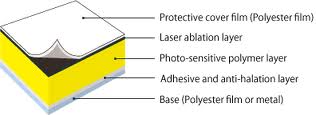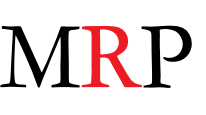Letterpress is a method of relief printing where, traditionally, movable lead or wood type is locked in a press, inked and transferred to paper by means of impression. In the West, the process was popularised by Johannes Gutenberg around 1450 and was the main method of printing until the second half of the 20th century. Recent times have seen a worldwide revival of the craft. Photopolymer is a water washable photo-sensitive nylon that when exposed to ultra-violet light and a film negative results in a relief plate similar to the iron, zinc, magnesium and copper plates that were traditionally used to create "cuts" or "blocks"—graphic images for books, brochures and other publications. Almost any digital font or image can be replicated this way without the need for type or metal plates. Types of photopolymer plates Plastic and Metal There are two main types of photopolymer plates—plastic-backed and metal-backed. The metal-backed plates are designed for mounting on a magnetic base. These bases can be very expensive and the plates can be difficult to align as the magnets are very powerful. Registration is also more difficult as the plate is not transparent. Relief Depths There are also two common relief depths—the distance from the printing surface to the upper part of the base. These are KF95 (0.95mm) standard relief and KF152 (1.52mm) deep relief. KF95 plates hold a finer line and distort less under impression. But they do require well adjusted rollers to avoid inking the base of the plate, especially on some treadle platens. The deeper KF152 plates can be a little more tolerant in these situations. Both steel-backed plates and deep relief plates require bases that differ from the standard depth base. We now offer both standard and deep relief plastic-backed plates along with the bases. Toyobo is a world leader in the production of photopolymers and its Printight® KF is specially formulated for letterpress printing. The plastic-backed plates are supplied with adhesive backing for mounting directly on a 0.875" aluminium base to achieve an overall height of 0.918"—known as "type high".
10 Point Plan for Quality Letterpress Prints with Photopolymer Plates 1. Quality artwork: PDF or EPS with minimum 600dpi scans, bitmapped art and outlined fonts. See File Preparation for more detail. 2. High resolution film negatives*: Minimum dpi is 2400 with a minimum optical density of 3.0. This is difficult to achieve on anything other than a high quality imagesetter. 3. Ultraviolet Light*: 350nm with precise exposure and correct spread to obtain a 25-30º shoulder. 4. Vacuum frame*: essential for holding the negative directly against the emulsion. Air pockets result in poor definition 5. Mechanical washout*: correctly calibrated, reciprocating orbital brushes make the best photopolymer plates. 6. Solid mounting base: aluminium is the most popular - must be 0.876". See Bases for more details. 7. Correct ink viscosity: this depends on the type of press you use e.g. flatbed cylinders often require the addition of Magnesium Carbonate to stiffen the ink. 8. Correct roller height: with the shallow relief, photopolymer plates are less tolerant of uneven or low rollers and overinking. 9. Packing: always replace indented packing and tympans to achieve the best results. Overpacking can create slurs. 10.Paper: use quality uncoated papers. Our favourites are Fabriano Roma, Crane's Lettra (some stock available), BLT Rives, Strathmore Bristol and Hahnemühle D&S 140 drawing. (2*-5* - we look after these.) The Process Specs Safety Data Sheet Pricing File Preparation Care and Storage Bases

© Moana Road Press 2014
